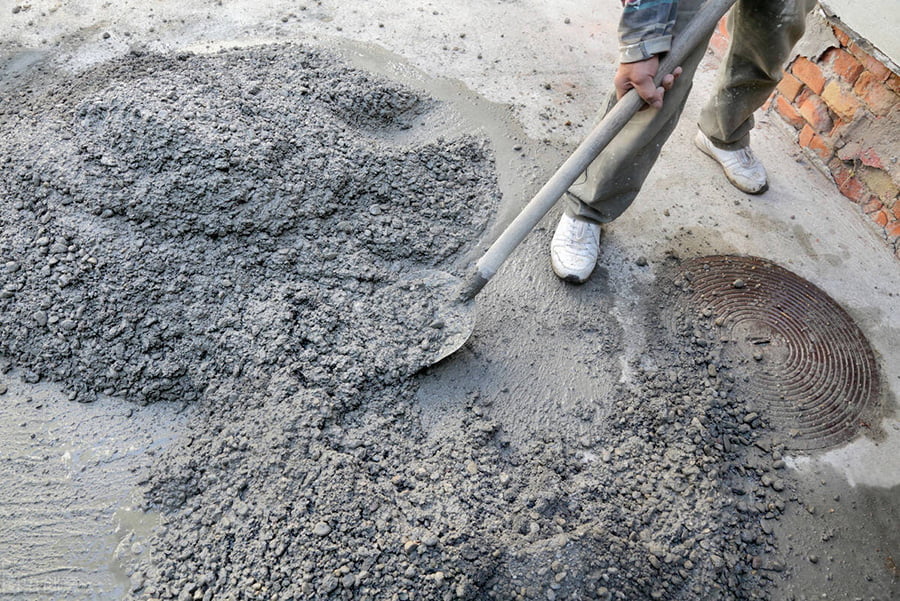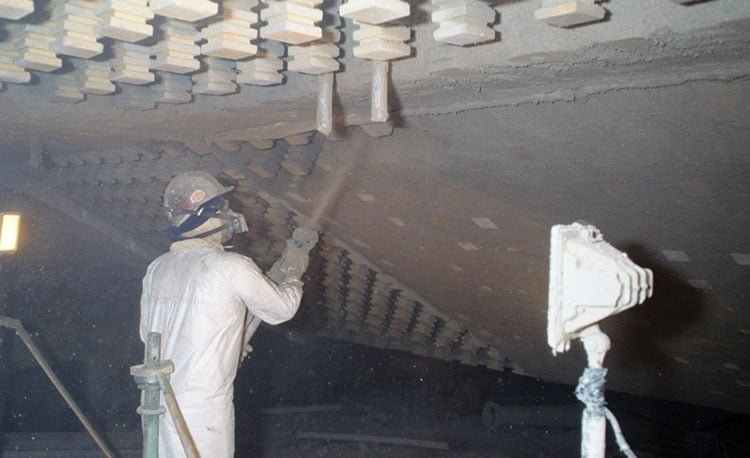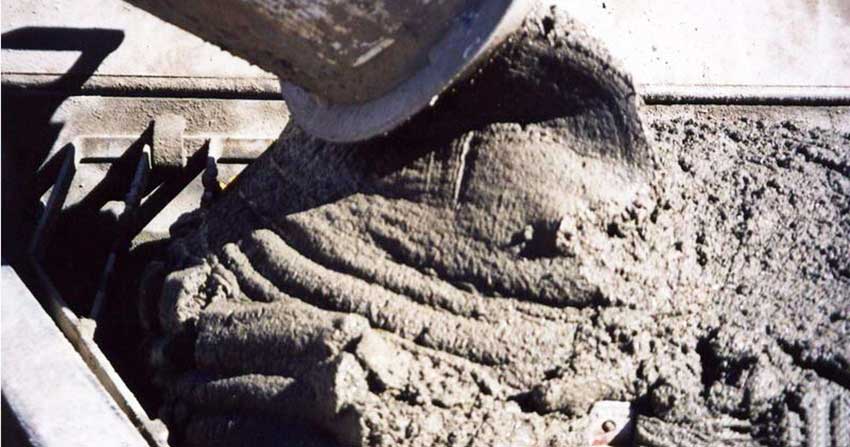The Tofu Terrace Water Source Improvement Project is located on the Petroleum River in the south of Yumen, and is a water conservancy hub project mainly for urban water supply. Its water discharge sand flushing gate pier, bottom plate requires the use of C70 high-strength wear-resistant concrete At present, the domestic use of single-mixed ordinary cement preparation of concrete strength up to 350# or so. Provincial Hydropower Engineering Bureau of the study prepared C70 high-strength silica fume concrete, the use of secondary casting and water-reducing agent composite process, the use of relatively low grade,525 # cement, mixed with part of the silica fume, formulated into C70 ~ C80. with anti-abrasive, anti-cavitation performance of high-strength concrete, to meet the requirements of the project design and construction.
The choice of cement dosage
Through a large number of tests know that the cement dumping more than 620kg/m3 strength will not have a significant increase. This is mainly because the concrete strength can not be played by the cement mortar and coarse aggregate, especially the role of coarse aggregate. Cement dosage increase is equivalent to the increase in cement sand, reduce the unit volume of aggregate, anti-cement mortar and all points of the aggregate to bear the load, so the strength of concrete is not high. From the destruction of concrete specimens, the destruction of the full play of concrete strength is all the coarse aggregate shear bad, similar to the destruction of stone.
The cement is 525# ordinary silicate cement, the dosage is about 600kg/m3, the most should not exceed 620kg/m3. In order to save cement and improve the physical properties of the concrete, mixing about 15% of silica fume to replace part of the cement, the general cement dosage is about 5l0kg/m3.
Water-cement ratio
Preparation of C70 high-strength microsilica concrete, water-cement ratio is an important parameter for controlling the strength of concrete, the smaller the water-cement ratio, the higher the strength of the concrete, but the more difficult the construction, in order to reduce the amount of cement and to meet the requirements of the construction of the ease of use, is usually used by mixing high-efficiency water-reducing additives and microsilica , which can prevent the use of high-efficiency water-reducing additives and greatly reduce the water-cement ratio, so that the loss of concrete slump caused by the large loss of the construction of successive Poor combination between the concrete can also increase the physical properties of concrete, delay the loss of concrete slump, so that the water-cement ratio down to 0.28 or so. The water-cement ratio referred to here is the ratio of the mixing water to the total amount of cement and microsilica , and in fact the amount of water required for complete hydration of cement is very small. The amount of water dumped after water reduction is sufficient to meet the requirements of the cement to exert strength, and the water-cement ratio is reduced to obtain high-strength concrete. Through the test to determine the final C70 silica fume concrete water-cement ratio of 0.28 ~ 0.32 is appropriate.
Admixture
The principle of selecting additives is to have too much water reduction rate, high degree of enhancement and no harmful elements. After a large number of tests, finally from 17 kinds of water reducing agent selected 3 kinds of high-efficiency water reducing agent, in order to ensure the quality, through the calibration test from 3 kinds of water reducing agent to determine the use of UNF series of high-efficiency water reducing agent.
Selection of sand rate
In order to reduce the impact of sand rate on the strength of concrete, and at the same time to meet the resistance to abrasion, the use of less sand rate to reduce the amount of cement, and maximize the use of coarse aggregate skeleton effect. With a low sand rate, the area occupied by coarse aggregate is large, and the impact and abrasion resistance of concrete with low strength is more favorable to be borne by coarse aggregate. Tested to determine that the sand rate control in 28% ~ 30% is appropriate.
As the maximum size of coarse aggregate is different, the abrasion rate is different, observing the specimens after the abrasion test found that the proportion of coarse aggregate being pulled out is larger in the case of D = 40 mm, while the coarse aggregate between D = 40 mm is filled by mortar, considering the abrasion rate and the size of the hole where the aggregate is pulled out, the most suitable maximum size of coarse aggregate is around 25 mm. For crushed stone and pebbles, the bonding of crushed stone with cement paste is better than pebbles, and it is more suitable for the requirements of impact resistant concrete, and finally it is determined to use 5-20mm limestone crushed stone as coarse aggregate, and its main technical indexes are shown in Table 1
| Table1 Table of main technical indicators of coarse aggregate | |||
| maximum particle size(mm) | specific gravity(g/cm3) | Crushing indicator(%) | Needle-like particle content(%) |
| 20 | 2.69 | 7 | 5.4 |
Selection of feeding method
High-strength concrete cement dosage is large, the use of primary feeding method is prone to wet lumps and sticky wall phenomenon. The use of secondary feeding method can not only solve the above problems, but also increase the strength of concrete accordingly. At present, the secondary casting methods used in China include cement mortar method, cement mortar method and so on. Without changing the mix ratio, only change the feeding order, the compressive strength of the specimen can be increased by about 20%. Comparison test between mortar method and net mortar method shows that the net mortar method has the phenomenon of sticking to the wall, and has limitations, especially in the case of less water consumption and more cement is not suitable for use. Therefore, the mortar method was chosen as the feeding method.
Compressive strength and impact and abrasion resistance
To improve the impact and abrasion resistance of concrete, the following conditions must be met:
- 1). Increase the strength of concrete so that the concrete surface is uniformly abraded;
- 2) .The maximum particle size of aggregate should be suitable so as not to form large pore holes by the water flow washing out;
- 3). The mortar bond should be too;
- 4). The area of coarse aggregate which is more abrasion resistant than mortar should be large, i.e. the type of coarse aggregate and sand rate should be selected reasonably.
The higher the compressive strength, the wear rate decreases exponentially. Generally relative to the crushed stone concrete, the use of pebble concrete curve to the abrasion resistance of this side of the move, this is because the surface of the crushed stone is rough, easy to wear . On the other hand, the bond between sand and gravel is strong, high compressive strength, so the pebble surface is smooth and not easy to wear, but the bond between mortar and aggregate is small, low compressive strength, so the curve of the pebble concrete moves to the side of the high abrasion resistance. The bond between gravel and mortar is larger, difficult to pull out but easy to be smoothed. All things considered, crushed stone is better adapted to high strength abrasion resistant concrete compared to pebbles even if it is slightly more abrasive. Whether mortar or coarse aggregate, to get uniform wear, its compressive strength should be above C70 ~ C80MPa. Tested by Zhengzhou Yellow Committee, its abrasion resistance meets the design requirements, and the test results are shown in Table 2.
| Table2 Concrete abrasion resistance test | ||||
| Compressive strength(MPa) | Anti-freeze label | Impermeable mark | Mortar strength(MPa) | Abrasion rate |
| 74 | not less than 300 | not less than S18 | 63 | 0.368 |
Conclusion
1) Using the mortar method of secondary feeding and water reducing agent composite process, the use of 525# ordinary silicate cement can be formulated above C70 high-strength microsilica concrete.
2) Adding microsilica to replace part of the cement not only saves cement but also improves the performance of concrete and enhances its durability.




